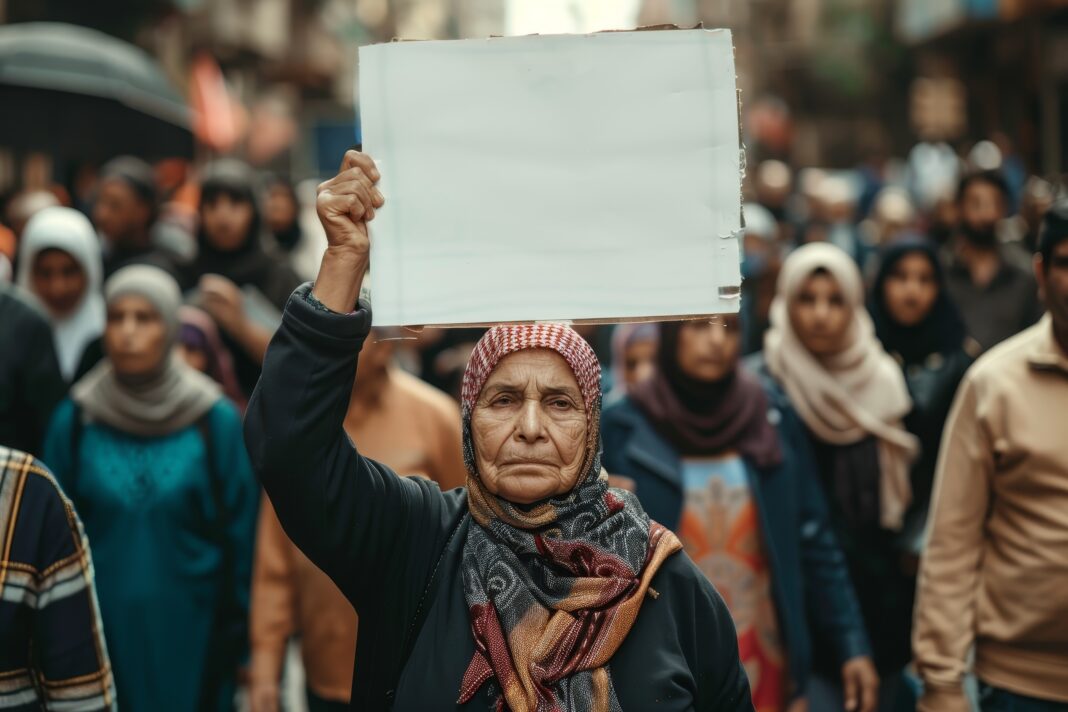Introduction to Candomblé
Candomblé is more than just a vibrant Afro-Brazilian religion; it’s a symbol of resilience and cultural identity. Rooted in the spiritual practices of African ancestors, this unique faith system has evolved into a powerful force for social mobilization. As practitioners come together to honor Olorun and the orixás, they also affirm their place in society. Through rituals that intertwine spirituality with activism, Candomblé shapes community dynamics and challenges social injustices. In exploring Candomblé politics, we uncover how religion serves as both a sanctuary and a catalyst for change within Brazilian society. Dive in to discover the intricate ties between belief, culture, and political action!
Candomblé, with its rich tapestry of rituals and beliefs, plays a significant role in shaping community dynamics. This religion is deeply intertwined with the cultural heritage of Brazil, showcasing how spirituality can influence social mobilization.
The intricate relationships between Olorun, orixás, and the vibrant houses of worship offer insights into collective identity. Additionally, practices like offerings and public festivals highlight Candomblé’s capacity to unite individuals for a common cause while fostering resilience against societal challenges.
Candomblé
Candomblé is a vibrant Afro-Brazilian religion that combines African traditions with elements of Catholicism. It honors a pantheon of deities known as orixás, each representing natural forces and human experiences.
Practitioners engage in rich rituals, music, and dance to connect with these spirits. Central to Candomblé are the houses of worship called terreiros, where community bonds strengthen through shared beliefs and practices. This spiritual connection fosters resilience among followers, linking them deeply to their cultural heritage while navigating modern society’s challenges.
Nações
In Candomblé, the term “Nações” refers to the various distinct communities or nations that practice this rich Afro-Brazilian religion. Each Nação embodies unique traditions, rituals, and interpretations of spirituality. These differences often reflect their origins from specific African ethnic groups.
Each Nação has its own pantheon of Orixás and practices that shape their worship. The vibrant diversity among them showcases the adaptability of Candomblé as it weaves together cultural elements from different regions while maintaining a strong connection to ancestral heritage.
Olorun and the orixás
Olorun represents the supreme deity in Candomblé, embodying the essence of creation and universal unity. As the ultimate source of power, Olorun transcends human understanding, existing beyond time and space.
The orixás serve as intermediaries between Olorun and humanity. Each orixá is associated with specific natural forces, elements, and aspects of life. They guide followers through their unique attributes—love, war, fertility—and offer protection. Devotees honor them through rituals that reinforce community bonds while celebrating diverse identities within Brazilian culture.
Exus and caboclos
Exus and caboclos play significant roles in Candomblé, embodying the complex interplay of spiritual forces. Exus are often viewed as messengers between the divine and human realms, guiding practitioners through challenges. Their energy is dynamic, reflecting life’s dualities.
Caboclos represent ancestral spirits tied to Brazilian indigenous heritage. They offer wisdom from the past, connecting practitioners to their roots. Through rituals involving these entities, devotees find strength and guidance while navigating contemporary societal issues within a rich cultural framework.
Birth and the dead
Birth and death are pivotal moments in Candomblé, each enveloped in deep spiritual significance. The arrival of a new life is celebrated with rituals that honor the orixás, invoking their blessings for protection and guidance. Families gather to celebrate, reinforcing community bonds.
Conversely, death is viewed as a transition rather than an end. Funerals incorporate vibrant traditions reflecting respect for ancestors. Ceremonies often involve offerings to ensure safe passage to the spirit world, highlighting an ongoing connection between the living and the deceased within this rich belief system.
Morality, ethics, and gender roles
Morality and ethics in Candomblé are deeply intertwined with its spiritual practices. They reflect a unique worldview that emphasizes respect for the orixás, ancestors, and community members. This belief system nurtures values such as compassion, justice, and responsibility towards one another.
Gender roles within Candomblé exhibit flexibility and depth. Women often occupy prominent positions as priestesses (mães de santo), guiding rituals and teachings. This empowers them within their communities while challenging traditional gender norms prevalent in broader Brazilian society. The religion fosters an environment where both men and women can express their spirituality freely.
Houses of worship
Houses of worship in Candomblé, known as terreiros, serve as vibrant community hubs. They are places where followers gather to honor the orixás through rituals and celebrations. Each terreiro reflects unique traditions, shaped by its leader’s vision and the ancestral influences that guide their practice.
These spaces often feature altars adorned with offerings and symbolic elements. The atmosphere is rich with music, dance, and spirituality. Here, devotees find comfort and solidarity while forging connections that transcend mere religious observance.
Shrines and otás
Shrines, known as terreiros, serve as sacred spaces within Candomblé where practitioners connect with the divine. Each terreiro has its unique atmosphere and rituals, reflecting the beliefs of its respective nação or nation.
Otás are sacred stones that hold spiritual significance in these shrines. Often embedded in the earth, they symbolize a connection to ancestors and provide grounding for rituals. Offerings placed around otás foster communication with Olorun and the orixás, reinforcing community ties and devotion among worshippers.
Offerings and animal sacrifice
In Candomblé, offerings are essential for maintaining a connection with the orixás. Practitioners present various items like food, flowers, and drinks to honor these deities. Each offering reflects the specific preferences of the orixá being celebrated.
Animal sacrifice also plays a significant role in rituals. It is viewed as a sacred act that fosters reciprocity between humans and spirits. The ritualistic nature ensures respect for life while emphasizing gratitude and devotion within this rich tradition. These practices reinforce community ties and cultural identity among practitioners.
Initiation
Initiation in Candomblé is a profound rite of passage. This process, known as “firmeza,” marks the entry into the spiritual community. Initiates undergo rigorous training to connect with their orixás and understand sacred practices.
During this transformative journey, participants receive new names and are introduced to rituals that shape their identities. The experience often includes intense emotional moments, fostering a deep bond with both ancestors and fellow practitioners. Such connections empower individuals within the broader social context of Candomblé politics and cultural identity.
Possession
Possession in Candomblé is a profound experience where practitioners believe they become vessels for the orixás, powerful deities representing elements of nature and human characteristics. During ceremonies, initiated members may enter trance-like states, allowing the orixás to communicate directly with the community.
This sacred process is often accompanied by music, dance, and rituals that enhance spiritual connection. It serves as a way to channel divine wisdom while simultaneously offering guidance and healing to those present. The act fosters communal bonds and reinforces cultural identity.
Public festivals
Public festivals in Candomblé are vibrant expressions of community and spirituality. These events celebrate the orixás, drawing participants together through music, dance, and rituals that resonate with deep cultural significance. The streets come alive as devotees showcase their devotion.
During these festivities, offerings are made to honor the deities. Colorful attire, rhythmic drumming, and passionate dancing create an atmosphere rich in energy and connection. Each festival serves not only as a religious observance but also reinforces social bonds among practitioners while inviting broader participation from society at large.
Divination
Divination in Candomblé serves as a vital link between the spiritual and physical realms. Practitioners seek guidance from the orixás through various methods, such as cowrie shell readings and palm leaf divinations. These practices reveal insights into personal challenges and communal concerns.
The process is deeply ritualistic, often involving prayers and offerings to ensure clarity in communication with the divine. This connection fosters a sense of belonging among practitioners while reinforcing their cultural identity amidst modern societal dynamics.
Healing and amulet practices
Healing practices in Candomblé often involve the use of spiritual rituals, herbal remedies, and prayers to address physical or emotional ailments. Practitioners believe that healing is deeply intertwined with the influence of the Orixás and ancestral spirits.
Amulets play a significant role as well, serving as protective charms infused with sacred energy. These objects are believed to ward off negative forces and attract positive outcomes in life. Each amulet carries unique meanings connected to specific deities and personal circumstances, showcasing their importance within this vibrant faith.
Funerals and the dead
In Candomblé, funerals reflect a deep reverence for the dead. Rituals honor ancestors and ensure their safe passage to the spiritual realm. Families gather to mourn, sharing stories that keep memories alive.
Ceremonies often include offerings to orixás and spirits, fostering connections between worlds. Drumming and singing create an atmosphere of communion, helping participants embrace both grief and celebration. This blend reinforces community bonds while acknowledging life’s cycle through death as a transformative journey rather than an end.
History
Candomblé’s history is deeply rooted in the transatlantic slave trade. Originating from African spiritual traditions, it emerged as enslaved peoples sought solace and community amid oppression. The fusion of various ethnic beliefs led to the establishment of distinct practices.
As communities formed, Candomblé evolved into a rich tapestry of rituals and deities. By the 20th century, it gained visibility as Afro-Brazilian culture flourished. Today, its historical journey reflects both resilience and resistance against cultural erasure while shaping Brazil’s diverse identity.
Origins
Candomblé originated in Brazil during the 19th century, blending African spiritual traditions with local elements. Enslaved Africans brought their beliefs and practices from various ethnic groups, such as the Yoruba and Bantu.
As they faced oppression, these communities began to adapt their rituals secretly. Over time, this fusion created a vibrant religious expression that honored both ancestral spirits and deities known as orixás. Candomblé laid roots deep in Brazilian culture, reflecting resilience amidst adversity while fostering a sense of identity among practitioners.
Formation and early history
Candomblé emerged in Brazil during the 19th century as a fusion of African traditions and Brazilian influences. Enslaved Africans brought their religious practices, which blended with indigenous beliefs and Catholicism. This syncretism was essential for survival under colonial rule.
The early history of Candomblé saw the establishment of various nações, or nations, each representing different African ethnic groups. These distinct communities maintained their rituals while adapting to new social realities. The resilience of practitioners ensured that these vibrant spiritual traditions would flourish amid adversity.
20th and 21st centuries
The 20th century marked a significant turning point for Candomblé. Amidst political turmoil in Brazil, practitioners began to reclaim their cultural identity. The religion evolved, adapting to modern influences while maintaining its core beliefs and practices.
In the 21st century, Candomblé has gained international recognition. This resurgence has fostered pride among practitioners and sparked interest in Afro-Brazilian culture. Social movements have embraced Candomblé as a symbol of resistance against discrimination, making it an integral part of Brazil’s cultural landscape today.
Beliefs
Candomblé beliefs are deeply rooted in the veneration of Olorun, the supreme deity, and the orixás, who embody various aspects of nature and human experience. Each orixá has distinct characteristics, colors, and symbols that reflect their unique powers.
Followers believe these divine entities influence daily life. Through rituals and offerings, practitioners seek guidance from them for personal growth and community well-being. This spiritual connection fosters a sense of identity among adherents while preserving African cultural heritage in Brazil’s diverse landscape.
Practices
Candomblé practices are rich and diverse, deeply rooted in African traditions. Rituals often involve music, dance, and vibrant ceremonies that honor the orixás—deities representing natural forces. Participants engage in spirited performances to invite these divine beings into their lives.
Offerings play a crucial role, with devotees presenting food, flowers, and animal sacrifices at altars known as otás. These gestures foster a connection with spiritual entities while reinforcing community bonds. Each practice carries significance, weaving together history and spirituality within this dynamic religion.
Demographics
Candomblé is predominantly practiced by Afro-Brazilians, reflecting its rich African heritage. Its followers often identify with diverse ethnic backgrounds, primarily from Yoruba, Bantu, and Fon traditions. This vibrant community showcases a blend of cultural identities that contribute to the tapestry of Brazilian society.
Urban centers like Salvador and Rio de Janeiro have significant Candomblé populations. These cities serve as hubs for religious activities and community gatherings. The demographics emphasize how deeply intertwined Candomblé is with Brazil’s social fabric and historical narrative, influencing various aspects of life today.
Reception and influence
The reception of Candomblé has evolved significantly over the years. Initially marginalized and stigmatized, it now enjoys increasing recognition as a vital part of Brazil’s cultural identity. This shift reflects broader societal changes, including greater acceptance of Afro-Brazilian religions.
Candomblé influences various sectors, from art to politics. Its rhythms resonate in music and dance while its rituals inspire social justice movements. As practitioners advocate for their beliefs and rights, they highlight the religion’s role in fostering community resilience and empowerment across Brazil’s diverse landscape.
Candomblé Politics: Religion as a Tool of Social Mobilization
Candomblé serves as more than just a spiritual practice; it is a powerful means of social mobilization. This Afro-Brazilian religion fosters communal ties, enabling followers to unite for cultural and political causes. Through rituals and gatherings, adherents can voice their concerns, advocating for social justice.
The connection between worship and activism is evident in public festivals and community events. These occasions not only celebrate Candomblé’s rich heritage but also empower individuals to confront issues like racism and inequality within Brazilian society.
Cultural heritage in Brazil
Brazil’s cultural heritage is a vibrant tapestry woven from indigenous, African, and European influences. This rich blend shapes the nation’s identity, creating unique expressions in music, dance, art, and religion. Candomblé stands out as a powerful example of this synthesis.
The rhythm of drumming and the dance invoke ancestral spirits while celebrating community ties. Festivals explode with color and energy, showcasing Brazil’s diverse traditions. Every element contributes to a deeper understanding of Brazilian culture’s resilience and adaptability throughout history.
Connections with African territoriality and politics
Candomblé embodies deep connections with African territoriality, reflecting the struggles and narratives of its ancestors. The religion serves as a bridge, linking cultural identity to physical spaces in Brazil. This bond fosters a sense of belonging among practitioners.
Political engagement within Candomblé emphasizes community rights and land preservation. By asserting their spiritual heritage, practitioners advocate for social justice and political recognition. These movements challenge historical marginalization while promoting autonomy over ancestral territories, highlighting the intricate ties between faith and activism in contemporary society.
Integration into modern social mobilization movements
Candomblé has increasingly found its place within contemporary social mobilization movements in Brazil. By leveraging its rich cultural heritage, the religion empowers marginalized communities, fostering a sense of identity and belonging.
Through public rituals and festivals, practitioners unite to voice their struggles against discrimination and inequality. This collective spirit not only preserves traditions but also amplifies demands for social justice. The intersection of faith and activism highlights Candomblé’s role as more than just a religion—it’s a powerful catalyst for change in society today.
References and Further reading
Candomblé is a rich tapestry that weaves together spirituality, history, and social dynamics. Its practices and beliefs not only reflect African heritage but also serve as a powerful tool for social mobilization in Brazil today. The religion remains integral to discussions about race, identity, and culture.
For those interested in delving deeper into this fascinating subject, numerous resources are available. Books like “Candomblé: A Yoruba Religion in Brazil” by Lázaro Cárdenas provide insights into its rituals and significance. Academic articles explore the intersection of Candomblé with politics and society.
Online platforms offer documentaries showcasing public festivals and ceremonies that highlight community involvement. Engaging with scholarly works enhances our understanding of how Candomblé shapes identities while navigating contemporary challenges.
Exploring these materials will expand your perspective on both the spiritual aspects of Candomblé Politics and their broader societal implications.



